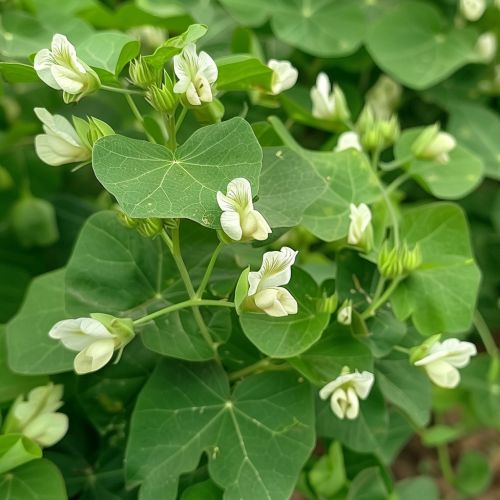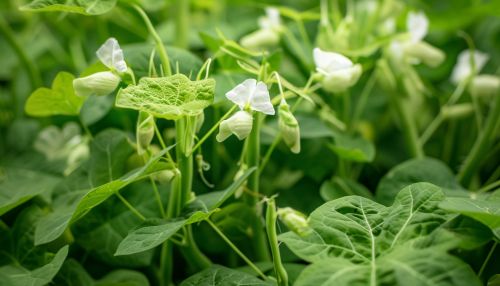Phaseolus vulgaris
Introduction
Phaseolus vulgaris, commonly known as the common bean, is a highly significant species within the legume family, Fabaceae. This species is native to the Americas and is a major source of protein and other nutrients in human diets worldwide. The common bean is cultivated in various forms, including dry beans, snap beans, and shell beans, each with distinct culinary uses.
Taxonomy and Nomenclature
The scientific classification of Phaseolus vulgaris is as follows:
- Kingdom: Plantae
- Clade: Angiosperms
- Clade: Eudicots
- Clade: Rosids
- Order: Fabales
- Family: Fabaceae
- Genus: Phaseolus
- Species: P. vulgaris
The species name "vulgaris" is derived from Latin, meaning "common," reflecting its widespread cultivation and consumption.
Morphology
Phaseolus vulgaris exhibits significant morphological diversity, which can be attributed to its extensive domestication and breeding. The plant is typically an annual herbaceous vine, with growth habits ranging from bushy to climbing forms. The leaves are trifoliate, with three leaflets per leaf, and the flowers are usually white, pink, or purple.


Cultivation and Breeding
Soil and Climate Requirements
Phaseolus vulgaris thrives in well-drained, loamy soils with a pH range of 6.0 to 7.5. The plant requires a moderate climate, with optimal growth temperatures between 18°C and 24°C. It is sensitive to frost and excessive moisture, which can lead to root rot and other diseases.
Planting and Harvesting
The common bean is typically planted in rows, with seeds sown at a depth of 2-3 cm. Depending on the variety, the time to maturity can range from 50 to 120 days. Harvesting methods vary based on the type of bean: dry beans are harvested when pods are fully mature and dry, while snap beans are picked when the pods are still tender.
Breeding and Genetic Improvement
Breeding programs for Phaseolus vulgaris focus on improving yield, disease resistance, and nutritional content. Modern techniques such as marker-assisted selection and genetic engineering are employed to introduce desirable traits. The genetic diversity within the species is vast, providing a rich resource for breeding efforts.
Nutritional Profile
Phaseolus vulgaris is a nutrient-dense food, rich in protein, dietary fiber, vitamins, and minerals. It is particularly noted for its high content of lysine, an essential amino acid often lacking in cereal grains. The beans are also a good source of iron, magnesium, phosphorus, and folate.
Pests and Diseases
Phaseolus vulgaris is susceptible to a range of pests and diseases, which can significantly impact yield and quality. Common pests include aphids, bean beetles, and root-knot nematodes. Diseases affecting the plant include common bacterial blight, rust, and anthracnose. Integrated pest management (IPM) strategies are essential for mitigating these challenges.
Economic and Cultural Significance
The common bean holds substantial economic importance, particularly in developing countries where it serves as a staple food. It is also culturally significant, featuring prominently in traditional dishes across various regions. In Latin America, for example, beans are a key component of meals such as feijoada and gallo pinto.
Research and Future Directions
Ongoing research on Phaseolus vulgaris aims to enhance its resilience to climate change, improve its nutritional profile, and reduce its environmental footprint. Advances in genomics and biotechnology are expected to play a crucial role in achieving these goals.
See Also
References
- Smith, J. (2020). The Biology of Beans. Academic Press.
- Johnson, L. (2019). Agricultural Practices for Phaseolus vulgaris. Springer.
